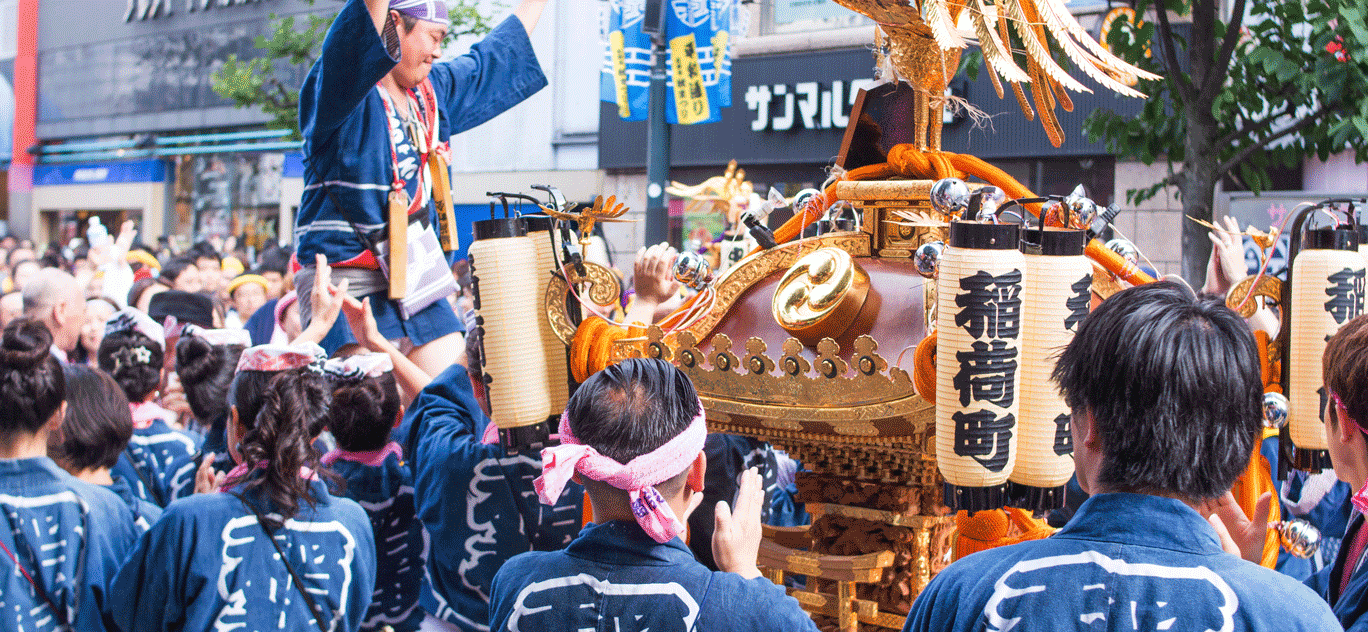Five unique Japanese traditions in autumn

As ancient and traditional as Japan is, there are a multitude of sights, sounds, and tastes associated with each season, and fall is no exception. After the oppressive heat and humidity of summer, people start opening their windows, turning off their A/C’s, and spending as much time outdoors as they can before winter comes. Here are five Japanese traditions intrinsically linked to autumn.
Koyo (autumn leaves)
Being a land of mountains and forests, koyo (紅葉) is a great excuse to get out of the city and enjoy nature’s beauty throughout Japan. While yellow and orange leaves are common, these kanji can also be read as momiji (Japanese maple), a tree whose crimson autumn leaves are symbolic of the season. Locals and travelers enjoy the brilliant colors everywhere in the country, but a few of the most scenic spots are Shirakaba Highlands in Nagano, Ryuzu Falls in Nikko, and the Mitake Canyon in Tokyo.
Aki matsuri (fall festivals)
Like in summer when natsu matsuri (夏祭) or summer festivals are popular, the autumn season also sees many major festivals across the country often to thank the gods for a good harvest, a practice based on an ancient imperial ritual called Niiname-sai (新嘗祭). Different Shinto shrines hold their celebrations on varying dates.

A typical aki matsuri on the streets of Kichijoji in Tokyo. Image from Wikimedia Commons
Sumo (sumo wrestling)
Sumo (相撲), the national sport of Japan, is ritualized wrestling whose origins lie in ancient Shinto myths. The last two major sumo (相撲) events of the year occur in the fall. In September, Tokyo hosts its Grand Tournament, while Fukuoka is home to the final Grand Tournament in November. These events run for a full 15 days and can be watched on TV or sometimes at small, local Japanese style pubs called izakaya (居酒屋). However, nothing beats watching sumo live at a major wrestling hall. Since the next season doesn’t start until January the next year, diehard fans and even casual fans follow the sport particularly closely during autumn.

A gyoji (sumo referee) arbitrates the match between two wrestlers on the dohyo (ring). Image by Hatch.m via Flickr under CC
Tsukimi (moon viewing)
The ancient practice of going to special locations to enjoy food and drink under the harvest moon was called tsukimi (月見). Unfortunately, in the era of TV and modern entertainment, this tradition has more or less died out. However, the image of the full moon and rice inflorescence ready to be picked continues to be a well-known visual for autumn in Japan. It even has its own emoji (go ahead, look for it!) While few people have moon viewing parties these days, traditional snacks made from pounded sweet rice and shaped like a bright full moon, tsukimi dango, are popular during this season.

The image of the full moon and the rice stalk signifies autumn in Japan. Image source
Tabemono (food)
Food in autumn isn’t all relegated to moon viewing. In fact, many people feel that fall is the best season for tabemono (食べ物). The first thing that comes to mind is sanma (秋刀魚) also called Pacific saury, a fish whose kanji mean “autumn-katana-fish” – katana being a reference to its shape. The kanji are rarely used, but the association with autumn is clear. Matsutake (松茸) mushrooms are everywhere this season and are often included in nabe (鍋), a simple hot pot dish. Kaki (柿) or persimmon and nashi (梨) or pear are popular autumn fruit desserts. One uniquely Japanese delicacy is ginnan (銀杏) also known as gingko seeds. These grape-sized soft, fleshy seeds are grilled, salted, and perfectly complement sake or beer. Just the right snack to enjoy winding down after a long day.

Persimmons (kaki) hanging to dry in front of a Japanese home. Image by Jeremy Eades via Flickr under CC
What do you love most about autumn in your country? Share them with us in the comments!
Main image by Henry Lawford via Flickr under CC


